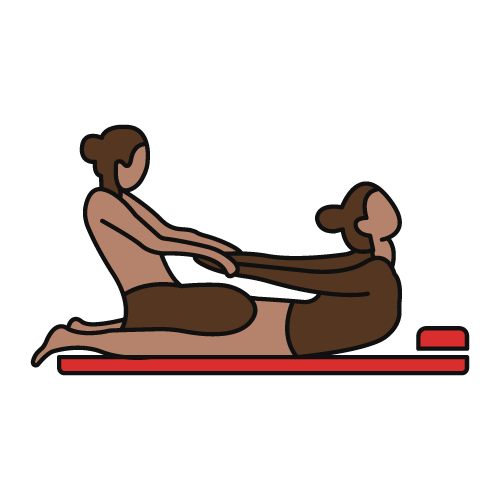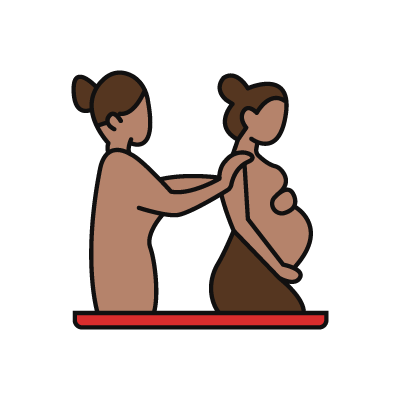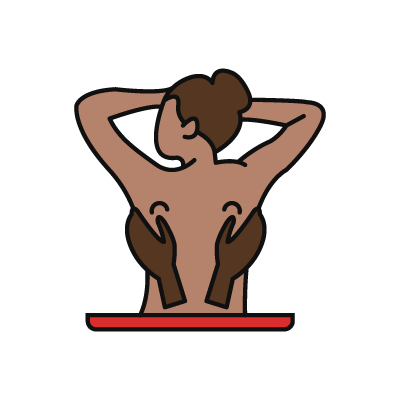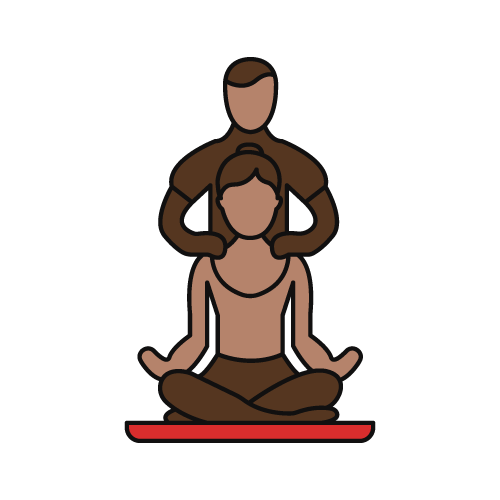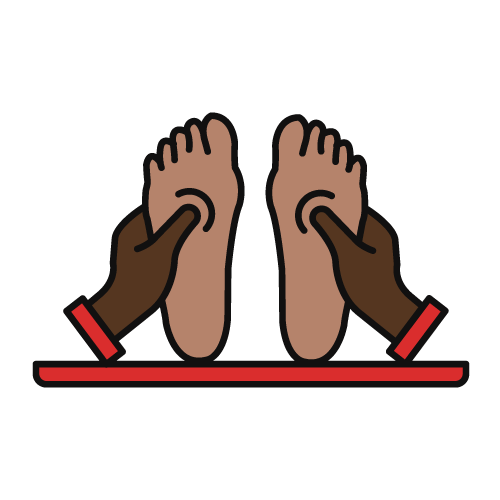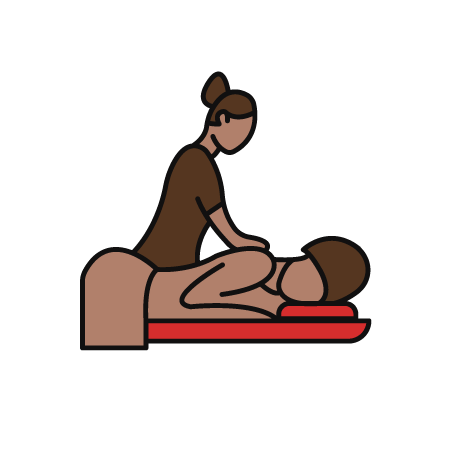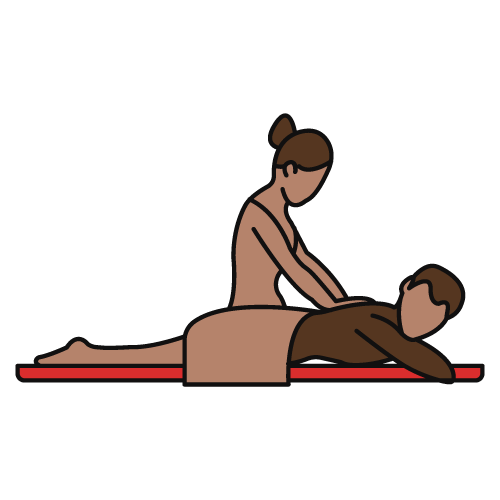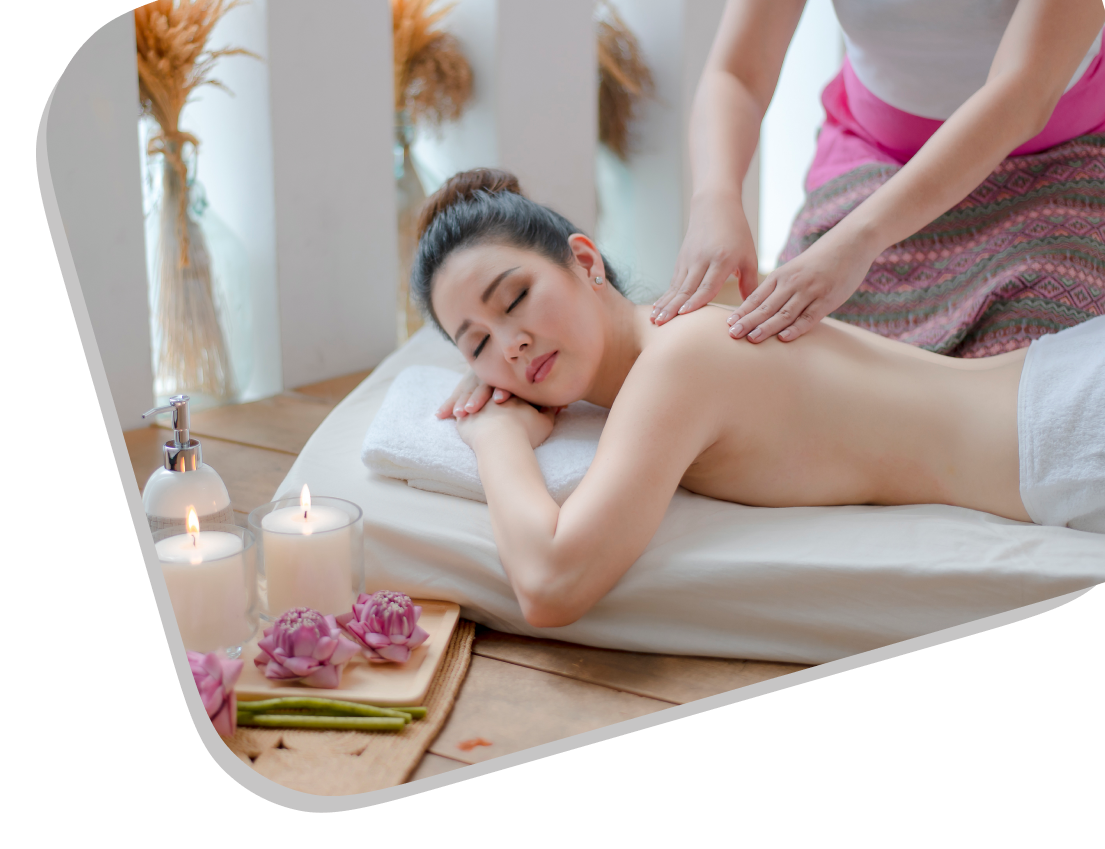
Heal From Within With Traditional Thai Massage London.
Experience the ancient art of letting your energy flow freely. Starting from only £69.
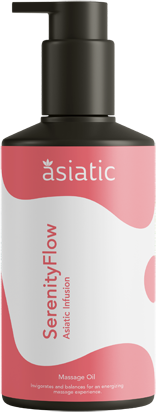
When combined with our soothing oil blends, our massage sessions will leave you feeling rested, relaxed, and at peace.
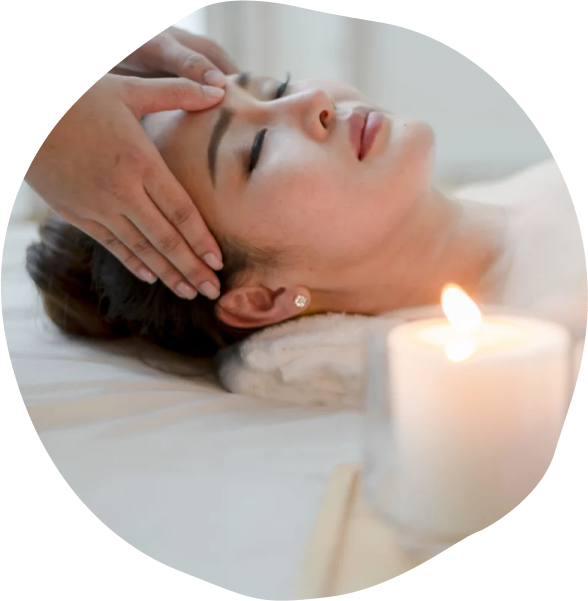
The Benefits of Asiatic Thai Massage
Tried and True Massage Favorites
Discover our rejuvenating and relaxing Thai massage services.
FAQs
More info on Asiatic Thai Massage
Thai massage is an ancient healing technique that originated in Thailand. It is thought to have been devised about 2,500 years ago by a physician named Jivaka Kumar Bhaccha, who was a contemporary of Buddha. The practise originated from ancient Indian Ayurvedic medicine and therapeutic practises to become a unique blend of traditional Thai medicine, acupressure, energy work, and yoga. Thai massage is generally regarded a spiritual practise because it is based on a thorough understanding of the human body, mind, and spirit.
A Thai massage is a type of therapy that uses pressure as well as stretching to help ease muscle tension and increase flexibility.
The therapist will work the muscles and joints with both their hands and their feet. Thai massage can be energizing as well as relaxing. It is frequently used to relax and improve blood circulation.
Click here to learn more about Traditional Thai Therapy .
Thai massage can be uncomfortable, particularly for those who are unfamiliar with deep tissue manipulation or have a low pain tolerance. However, the therapist’s purpose is not to produce pain, but to relieve it. The degree of discomfort can also differ based on the techniques utilised and the individual’s muscle tightness and flexibility. It is critical to communicate with the therapist about how much pressure is comfortable in order to have a great encounter.
Thai massage is not advised for pregnant women, those suffering from osteoporosis, or those who have recently undergone surgery.
Please consult your doctor before scheduling a session if you have any other health concerns.
There is no one-size-fits-all answer to this question because the frequency of Thai massage will vary according to individual needs. Many people, however, find that receiving Thai massage once a week or every other week is beneficial.
If you’re new to Thai massage, you should try it once a week to see how your body reacts. The frequency can then be adjusted as needed.
For example, if you find that getting Thai massage every other week makes you feel more relaxed and refreshed, you might want to stick to that schedule.
If, on the other hand, you find that you need Thai massage more frequently to maintain your results, you should schedule it on a weekly basis.
Thai massage has numerous benefits, some of which are listed below:
- Reduces stress and anxiety: Thai massage can assist increase joint flexibility and range of motion through stretching and passive movements.
- Improves flexibility and range of motion: By applying pressure to particular places on the body, Thai massage can help reduce muscle tension and pain.
- Relieves muscle tension and pain: By applying pressure to particular places on the body, Thai massage can help reduce muscle tension and pain.
- Boosts the immune system: Thai massage can help activate the immune system and improve general wellness by manipulating the body’s energy pathways and pressure points.
- Increases energy and stamina: By improving blood flow and oxygen to the muscles, Thai massage can assist enhance energy and endurance.
- Improves overall well-being: Thai massage is well-known for its capacity to promote general well-being by harmonising energy in the body and inducing relaxation.
.
Traditional Thai massage is a type of massage that relies on gentle pressure and stretches to relieve tension and improve flexibility.
Thai massage is frequently used to alleviate stress, improve circulation, and alleviate pain. It can also be used to increase range of motion and relieve congestion caused by chronic conditions like asthma.
Throughout a Thai massage, the massage therapist will apply pressure and stretch your muscles with their hands, elbows, and feet. You may be asked to lie down on a mat or a hard surface, such as a table.
Wear loose, comfortable clothing so that the therapist can move your body easily.
Anyone who wishes to improve their physical and emotional well-being can benefit from Thai massage. It benefits people of all ages, from children to the elderly. Thai massage is especially beneficial for athletes, persons with chronic pain or physical restrictions, people who are stressed or anxious, and those looking for general relaxation and renewal. Thai massage treatments for pregnant women might also be beneficial. However, before obtaining Thai massage, you should check with a skilled practitioner, especially if you have any medical issues or injuries.
Thai massage is a distinct type of massage based on the notion that energy lines run throughout the body.
This type of massage is thought to promote healing and well-being and is gaining popularity in Western countries.
Thai massage is becoming increasingly popular for a variety of reasons. For one thing, it is a highly effective type of massage.
Thai massage can help with pain relief, circulation improvement, and flexibility. It is also said to alleviate anxiety, stress, and insomnia.
Another reason Thai massage is becoming increasingly popular is that it is a relatively safe type of massage. Thai massage is a gentle massage that does not use oils or lotions.
Thai massage is a form of therapy that promotes relaxation and healing through the use of traditional Thai techniques.
The massage can be performed with or without clothing, but it is most commonly performed with the person dressed in loose, comfortable clothing.
The use of pressure points is one of the most distinguishing features of Thai massage. Pressure points are areas of the body that are thought to be linked to other parts of the body.
Thai massage can help relieve pain and tension in other areas of the body by applying pressure to these points.
Thai massage also makes use of the feet. The therapist will apply pressure to the person’s body with their hands, elbows, and feet. The therapist’s feet may also be used.
.
